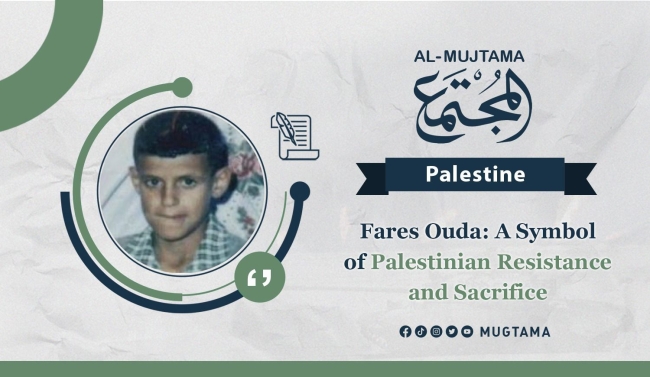Fares Ouda: A Symbol of Palestinian Resistance and Sacrifice
Since the Zionist Occupation, Palestinians have witnessed numerous moments of tension and tragedy, but few have captured the world's attention and stirred emotions as profoundly as the story of Fares Ouda. Born on December 3, 1985, in the Al-Zaytoun neighborhood of Gaza City, Fares became an emblematic figure during the Second Intifada, standing up against Israeli forces with nothing but stones in hand.
Fares Ouda's life was cut short on November 8, 2000, when he was just 15 years old. The iconic image of Fares, standing alone with a stone in hand, facing an Israeli tank, was captured by a photojournalist from the Associated Press on October 29, 2000. This powerful image resonated globally, becoming a symbol of Palestinian resistance and opposition to Zionist occupation.
As the Second Intifada unfolded in September 2000, Fares began skipping school to participate in events near the Karni Crossing or at the Israeli settlement of Netzarim. His school director complained about his absence, but his parents struggled in vain to keep him away from the confrontations. Fares' mother, An'am, recalls her attempts to restrain him physically, describing how he once escaped through a window when confined to his room.
Fares actively engaged in stone-throwing protests, a common form of resistance during the Intifada. His defiance against the Zionist military caught the attention of the international community, especially after the photograph of him facing a tank circulated widely. The image encapsulated the bravery and determination of a young boy standing against overwhelming military force.
The turning point came on November 8, 2000, when Fares, once again hurling stones at the Karni Crossing, was shot in the neck by Zionist soldiers. Close to a Zionist tank, it took an hour before his body could be retrieved and loaded into an ambulance. His death was announced upon reaching the hospital.
Fares Ouda's funeral drew tens of thousands of people, mourning the loss of a young life dedicated to resisting for the sake of Al-Aqsa. His father expressed pride in Fares' martyrdom, echoing the sentiments of many Palestinian families who lost loved ones to Zionist forces during the Intifada.
In the aftermath of his death, the Ouda family received a $10,000 check from then-Iraqi President Saddam Hussein, a gesture of support for Palestinian families affected by the conflict. An'am Ouda, Fares' mother, remarked that her son's blood was worth much more than any financial compensation.
Fares Ouda's image and story became iconic, often referred to as the "Poster Boy of Palestinian Defiance." Graffiti, wall art, calendars, and posters commemorated his legacy. In 2001, his slingshot was displayed in an exhibition titled "100 Martyrs - 100 Lives" in Ramallah, praised by Yasser Arafat in February 2002. The Fares Ouda Activity Award, established in his name, is presented annually by the Return Organization, a Palestinian rights coalition.
Fares' impact extended beyond symbolism. The Jerusalem Post reported a change in the Zionist military's directives regarding the use of force against stone-throwers after his death. The incident highlighted the immediate repercussions of Fares Ouda's story on the ground.
His televised moments of defiance, along with Mohammad Al-Durrah, another 12-year-old Palestinian boy, throwing stones at Israeli tanks during the Second Intifada, immortalized the youth as symbols of resistance. Barbara Goldschneider, citing Fares and Mohammad, mentioned how their televised images transformed perceptions of the conflict, showcasing the courage of Palestinian youth against overwhelming odds.
In conclusion, Fares Ouda's life and death encapsulate the tragedies of the Zionist Occupation. His story, etched in the collective memory of Palestinians, stands as a testament to the resilience of a people facing adversity. Fares Ouda, the boy who faced a tank with a stone, remains an enduring symbol of Palestinian resistance and sacrifice.


